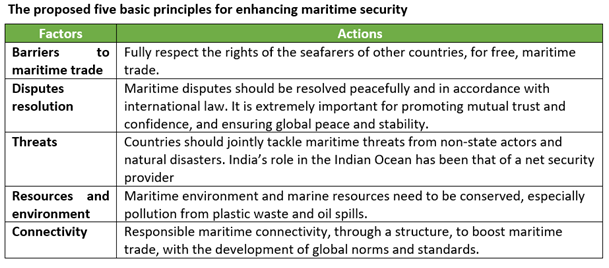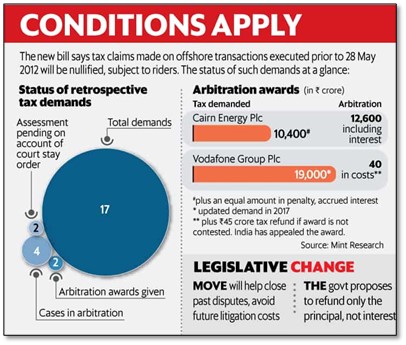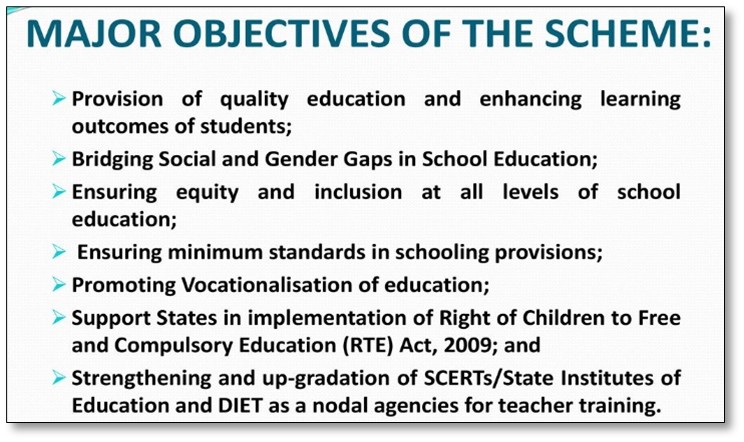Friday, 16th July 2021
Storage of payment systems data
In News
The Reserve Bank of India (RBI) has imposed restrictions on Mastercard from onboarding new domestic debit, credit, or prepaid customers on its card network.

About the News
- The action has been against the payment system operator for violating RBI's norms on the storage of payment systems The supervisory action has been taken in the exercise of powers vested in RBI under Section 17 of the Payment and Settlement Systems Act, 2007 (PSS Act)
- Mastercard is a Payment System Operator authorised to operate a Card Network in the country under the PSS Act. The order comes as firms such as Mastercard and Visa also face growing competition from domestic payments network Rupay.
About the storage of payment systems data regulations
- Data Localisation Rules: The RBI had issued a directive in April 2018 on 'Storage of Payment System Data'. It had advised all system providers to ensure that within a period of six months, the entire data relating to payment systems operated by them is stored in a system only in India.
- Data: The data should include end-to-end transaction details and information pertaining to payment or settlement transaction that is gathered as part of a payment message.
- Processing abroad: In case the processing is done abroad, the data should be deleted from the systems abroad and brought back to India not later than the one business day or 24 hours from payment processing, whichever is earlier.
- Banks: In the case of banks, especially foreign banks, earlier specifically permitted to store the banking data abroad, they may continue to do so; however, in respect of domestic payment transactions, the data shall be stored only in India, whereas for cross border payment transactions, the data may also be stored abroad as indicated earlier.
- Need for the Regulation: In recent times, there has been considerable growth in the payment ecosystem in the country. Such systems are also highly technology dependent, which necessitate adoption of safety and security measures.
- In order to ensure better monitoring, it is important to have unfettered supervisory access to data stored with these system providers as also with their service providers / intermediaries/ third party vendors and other entities in the payment ecosystem.
- Concerns: Several concerns have been raised against the regulation like, the rules essentially prohibits players from sharing any data to their centralized servers for fraud monitoring, or for serving as back-up repository. Also concerns of increase in infrastructure costs of the payment operators for storage of data in India, has been raised.
Sources:
AI powered grievance management application
In News
Union Defence Minister has launched an Artificial Intelligence (AI)-powered grievance management application.

About the AI based application
- Spam identification: The AI tool has capability to understand the content of the complaint based on the contents therein, and hence can identify repeat complaints or spam automatically.
- Categorisation: Based on the meaning of the complaint, it can categorise complaints of different categories even when key words normally used for such search are not present in the complaint.
- Analysis: It enables geographical analysis of complaints in a category including analysis of whether the complaint was adequately addressed or not by the concerned office. It would also reduce human intervention, save time, bring more transparency in their disposal.
- Enable improvements: Given that lakhs of complaints are received on CPGRAMS portal (Centralized Public Grievance Redress and Monitoring System portal) of Department of Administrative Reforms and Public Grievances, this application will enable systemic improvements to address these grievances.
- Significance: The release of this application marks the introduction of AI-based innovations into governance and administration. This project is first of its kind initiative of the Government for using AI, data science and Machine Learning techniques in grievance redressal. The success of this project in MoD will pave the way for extension of this application across other Ministries.
Source:
Naga Peace Talks
In News: The Parliamentary Core Committee on Naga Political Issue has appealed to the negotiating parties to set aside preconditions and resume peace talks with a positive approach of mutual respect.
About the News
- The armed Naga groups have been advised to hammer out their differences and come together for “one solution and one agreement”.
- A final solution has been elusive because of the stand of the Naga groups, specifically National Socialist Council of Nagaland (NSCN- IM) on a separate Naga flag and a separate Naga constitution (Naga Yezabo).
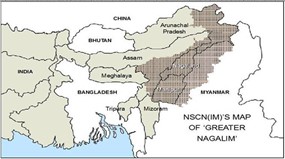
Demands of the Nagas
- The key demand of Naga groups has been formation of Greater Nagalim(sovereign statehood) i.e., redrawing of boundaries to bring all Naga-inhabited areas in the Northeast under one administrative umbrella.
- It includes various parts of Arunachal Pradesh, Manipur, Assam, and Myanmar as well.
About the Nagas
- Nagas are hill people(population approx 2.5 million) living in NE Indian states and Myanmar.
- They are an ethnic community that comprises several tribes from the Indo-Mongoloid Family.
Peace talks
- The peace process between the Government and the Naga extremist groups has only been partially successful for more than 23 years now.
- While the NSCN (I-M), which has been in ceasefire mode since 1997, signed the Framework Agreement in August 2015, a conglomerate of at least six rival outfits called the Naga National Political Groups had inked the Agreed Position in November 2017.
- In the framework agreement with the NSCN (I-M), the government of India recognized the unique history, culture, and position of the Nagas and their sentiments and aspirations.
- 2019: The State government decided to prepare the Register of Indigenous Inhabitants of Nagaland.
Conclusion
All the factions and groups of the insurgents must be included in the negotiations with the Centre. Any arrangement should lead to social and political harmony, economic prosperity of all tribes and citizens of the states.
Sources:
- Nagas are a hill people who are estimated to number about 2.5 million.
- Nagas are a hill people who are estimated to number about 2.5 million.2
- Why have the Naga peace talks stumbled?
- Non-State Actors in Nagaland
- Explained: Naga talks — Long road, issues
Image source:
Urban River Management
In News
The National Mission for Clean Ganga (NMCG) in partnership with National Institute of Urban Affairs (NIUA) has released a policy document entitled Strategic Guidelines for Making River Sensitive Master Plans.
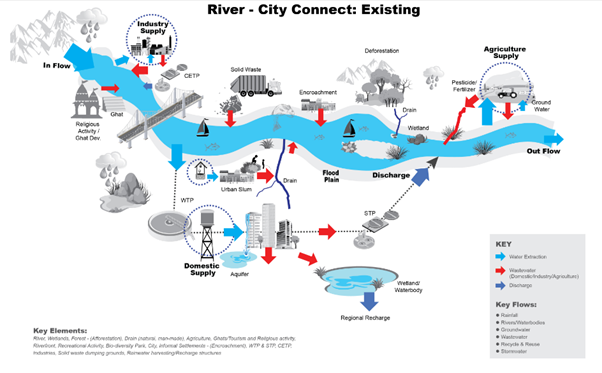
Introduction to Urban Rivers
- Cities and rivers have an intrinsic relationship. Traditionally, the rivers have been at the centre of various cultural, religious, livelihood-related, and recreational avenues in cities.
- There are several examples of city rivers- Thames in London, Seine in Paris, Hudson in New York, Ganga in Varanasi, Yamuna in Delhi etc.
Role of Urban Rivers – Benefits to city
- Improvement in air quality due to denser vegetation and the transport of fresh air along the river corridor. River floodplains are naturally conducive for groundwater recharge and rivers are the primary source of fresh water supply.
- Micro-climate regulation as rivers has a cooling effect in the vicinity, thus mitigating Urban Heat Island effect. They also act as carbon sinks.
- Reduce severity and instances of urban flooding by regulating drainage and flows.
- Rivers serve as the Habitat for biodiversity – aquatic, terrestrial and avifauna.
- Rivers are a key source for generating economy and serving livelihood dependencies.
- Rivers help in reconnecting people to their natural environment, and increase the possibility to use them for educational, cultural, traditional purposes.
Urban River Management
- Urban River Management can be understood as the process of conservation, development, and restoration of the river resources within the administrative extent of a city. It aims at achieving a careful balance between the ecological, infrastructural, social, recreational, and economic functions of a river within the city. It should ensure that within the city boundary, the river behaves as Environmentally Sensitive, Economically Viable and Socially Inclusive.
- Hence, River Management within cities has to be addressed by two broad categories of actions.

Challenges for River Management in Cities
- Poor Drainage – rain now falls onto hard surfaces such as paving and roads and drains quickly into the river system increasing storm flows and runoff increasing the potential for flooding.
- Development within the floodplain – housing, industry and infrastructure can lead to greater flood risk, loss of habitats and biodiversity. This has further depleted the green cover of city and degraded the lakes, ponds and wetlands.
- River profile – raising riverbanks and straightening were used to try and reduce flooding and drain land. They might have solved a local problem, but they often put pressure on the water course and downstream land.
- Water supplies – abstracting water from rivers, canals, reservoirs, lakes or underground aquifers to provide public water supply for agriculture and industry. Over abstraction can lead to problems such as drying out of water courses and wetlands and sinking water tables.
- Pollution – waste dumping, chemicals from industry and drainage from roads containing oil are all contributors to river pollution, leading to loss of water quality and biodiversity.
- For example, only 22 km of the Yamuna River that flows through Delhi is responsible for 70% of the pollution in the entire river.
Relevance of Master Plan for Urban River Management
- Localization of plan: Master Plans are developed for cities. Hence, incorporating river thinking into Master Plans creates the ground for direct implementation of actionable items.
- Time factor: Restoring degraded rivers takes time and requires sustained effort. A Master Plan is typically prepared for a 20–30-year period, which makes it an ideal avenue for integrating long-term actionable items.
- Concerted and coordinated efforts: Holistic River management requires concerted and coordinated efforts from multiple stakeholders, which usually operate in silos. A Master Plan is developed for the entire city, encompassing different planning sectors.
- Citizen Engagement: Master Plans are expected to be made with citizen engagement and support. The citizens, therefore, have a voice in the making of the Plan. This creates a unique opportunity to make river protection and rejuvenation a people’s mandate.
- Legal backup: Master Plans are legally binding statutory documents. River-related interventions included in Master Plans will, therefore, have a legal backing, making them easier to implement.
- Federal aspect: Master Plans are prepared by organizations reporting to the State, and water is a state subject. Thus, urban river management has a natural complementarity with the Master Plans of cities.
Way Forward
- Localizing national policies and instruments: A number of national policies (e.g. National Water Policy 2012, National Policy on Faecal Sludge and Septage Management 2017) have provided key river-related directions for cities to adopt. It is important for the Master Plan to acknowledge and incorporate these.
- Developing city-specific sectoral strategies: elaborating on specific key strategies (e.g. for riparian buffer development; for relocating encroachments in the river zone) that are required in the city for sustainable management of the river.
- Land use assignment: including the appropriate land use categories, use zones, use premise, and associated permissible/non-permissible activities in the flood plain as well in areas in other parts of the city that have a bearing on river management.
- Development control regulations: to manage the Floor Area Ratio, ground cover and height restriction in the relevant areas.
- Special projects: for key big-ticket iconic endeavours that a city should undertake in order to enhance the river-city relationship (e.g. riverfront development project; reviving historic water bodies; developing a constructed wetland).
Conclusion
Healthy rivers are an absolute necessity for healthy and liveable cities. Cities will, therefore, need to plan their development activities with due consideration for the river, respecting the threshold of disturbance that it can handle naturally without any alteration in its properties, or ability to function.
Question: “The importance of integrating the river within the planning mechanism of the city is of paramount importance.” Discuss this statement in light of existential threats being faced by India’s urban rivers.
Source:
- Strategic Guidelines for MAKING RIVER-SENSITIVE MASTER PLANS
- Draft Strategic Guidelines MAINSTREAMING Urban River Management into Master Plans
This Day in History -Trinity Nuclear Test
On 16th July 1945, the United States tested the first atomic bomb near Alamogordo, New Mexico, called the ‘Trinity’ nuclear test. Nicknamed the “gadget”, the plutonium-based implosion-type device created a crater over 300 metres wide. The nuclear research was carried out by the US under the Manhattan Project, which started in 1942. U.S. efforts to develop nuclear weapons were driven by the fear that Nazi Germany would soon be able to do so. Three weeks after the test, on 6 and 9 August 1945, nuclear bombs were dropped on the Japanese cities of Hiroshima and Nagasaki, killing tens of thousands civilians immediately and many more from radiation exposure later.

Sources:
Image of the Day -Monk Fruit
This is the image of the ‘monk fruit’ from China, which is known for its properties as non-calorific natural sweetener. It was introduced for field trials in Himachal Pradesh. Due to its economic benefits, the demand for monk fruit is gradually increasing in the international market. The plant prefers to grow in mountainous area with an annual mean temperature of about 16–20 °C and humid conditions.

Sources:
Vikas Engine for Gaganyaan
- Context: ISRO has successfully conducted the third long-duration hot test on the Vikas Engine at the ISRO facility in Tamil Nadu’s Mahendragiri.
- Vikas engine is a high thrust engine used in the Polar Satellite Launch Vehicle (PSLV) and the Geosynchronous Satellite Launch Vehicle (GSLV) series of expendable launch vehicles for space launch use.
- ISRO’s GSLV Mk III, which successfully carried the Chandrayaan-2 mission to space in its first operational flight, has three stages – the two solid S200 boosters fired at the launch, the core L110 liquid stage, and the upper C-25 cryogenic stage.
- ISRO tested the liquid propellant Vikas Engine for the core L110 liquid stage of the GSLV Mk III vehicle, as part of the engine qualification requirements for the Gaganyaan Programme that will carry humans to space.
Source:
- Proud moment’: Netizens cheer as ISRO successfully conducts 3rd test of Vikas Engine for Gaganyaan
- ISRO successfully tests engine for its manned Gaganyaan mission
- Vikas (rocket engine)
Picture source:
National Ayush Mission - Edukemy Current Affairs
- Context: The Union Cabinet has approved the continuation of National AYUSH Mission (NAM) as a Centrally Sponsored Scheme till 2026.
- NAM is a flagship scheme of Ministry of AYUSH launched in 2014.
- The basic objective of NAM is to:
- Provide better access to AYUSH healthcare services.
- Promote the cost effective AYUSH services.
- Improve AYUSH education.
- Facilitate the enforcement of quality control.
- Focus on reducing communicable/non-communicable diseases.
- The Mission addresses the gaps in health services through supporting the efforts of State/UT Governments for providing AYUSH health services/education in the country, particularly in vulnerable and far-flung areas.

Source:
- Centrally Sponsored Scheme of National AYUSH Mission (NAM)
- Cabinet approves continuation of centrally sponsored scheme National AYUSH Mission
Picture Source:
Longevity Finance
- Context: The International Financial Services Centres Authority (IFSCA) has set up an expert committee to recommend the road map for the development of Longevity Finance Hub.
- Longevity finance refers to the dynamics of including the senior-age members of society and product-services related to them in the financial system.
- Need for Longevity Finance:
- There are one billion people in the silver generation, a global cohort of individuals aged 60 years and older, with a combined spending power of USD 15 trillion.
- Development in medicinal science and technology will support extending lifespan and longevity of the silver generation.
- By 2040, there will be more members of the silver generation than people under 20. New products on wealth management, health, insurance, and other investment products will need to be designed considering the change in demographics.
Source:
‘Fit For 55’ Legislation
- Context: The European Union has unveiled ‘Fit For 55’ Legislation.
- The Legislation comes with a vision to make Europe, the first climate-neutral continent by 2050.
- The legislation will focus on the following:
- Slashing the region’s emission of greenhouse gases by 55% over this decade.
- Measures to phase out the sale of gasoline and diesel-powered vehicles within 20 years.
- Stricter limits on car pollution and new national limits on gas emissions.
- A scheme that will require domestic companies to pay for the gases they release into the atmosphere.
- A contentious plan called “Carbon Border Adjustment Mechanism” which would impose tariffs on imported products based on the greenhouse gas emissions associated with them, effectively shielding EU-based companies from goods made in countries with less strict emission policies.
Source:
Merging village into cities: More unfunded mandate
Essence: Recent merger of several villages in Maharashtra with neighbouring Pune Municipal Corporation (ULB) throws a light on challenges coming out of such mergers. Though such merger comes with opportunities like improved infrastructure and better governance, but several challenges make this merger unjust to the ULBs or to the erstwhile villages. Lack of clarity with timing of mergers; fears of enhanced taxation; no prior assessment of ability of the municipal body; additional requirement manpower to the ULB; etc. are some challenges which needs to be addressed. ULBs that are already starved of funds struggle both on account of resources and manpower. Hence, we need an interim process of declaring such peri-urban areas into independent municipal councils and support them to bring in better infrastructure and governance.
Why should you read this article?
- To get an overview of mergers of peri-urban areas with the ULBs in India.
- To understand opportunities and challenges of such mergers.
- To know what possible steps should be taken to serve merged areas more efficiently.
Sources:
Finally, a national maritime sherpa
Essence: Editorial is bringing focus on new development in maritime security arena I.e national maritime security coordinator (NMSC). The NMSC will be part of a vertical that will work under the national security adviser (NSA) and will hopefully enable the much-needed macro harmonisation of the many different ministries and departments to manage India’s vast maritime spectrum.
Nation’s comprehensive maritime security (CMS) is much wider than that of hard military/naval security. CMS also include the geo-economic (trade, energy, fishing, sea-bed mining et al) and the geo-physical (the environmental and ecological determinants subsumed as the health of the oceans). India’s dependence on the seas and oceans is vast and while trade, connectivity, energy and fishing strands are reasonably well known, the cyber dimension is often ignored.
Why you should read this article?
- To know about the appointment of a national maritime security coordinator (NMSC).
- It is also providing information on steps taken by government for spurring growth & ensuring security in coastal areas.
- To get insights into the dimensions of comprehensive maritime security (CMS).
Source:
Finally, a national maritime sherpa
Organic farming: How Indian states are stepping up the act
Background:
- In India, natural farming movement is being led by farmers, civil society, etc.
- Organic farming is in a nascent stage in India with a major part of the area being concentrated only in a handful of states.
- Farmers of ancient India have evolved nature-friendly farming practices such as mixed farming, mixed cropping, and crop rotation.
States coming forward
- Andhra Pradesh is the frontrunner among all states in implementingnatural farming at a mass scale.
- In the last few decades, natural-farming movement has spread to Karnataka, Tamil Nadu, Maharashtra etc.
- Karnataka initiated zero budget natural farming in each of 10 agro-climatic zones of the state
- Himachal Pradesh has set an ambitious target of converting entire state to natural farming by 2022 under scheme of Prakritik Kheti Khushal Kisan.
Reasons for this change
- Push by top leadership which aims to reduce chemical fertilizers and promotion of organic and natural farming at various forums including the United Nations convention
- Government Support like Bhartiya Prakritik Krishi Padhati’ as a new sub-mission under Paramparagat Krishi Vikas Yojna (PKVY)
- Sensitisation of farmers, consumers that chemical-based farming is harmful for ecosystem, agriculture and for health as well
Where can this case study be used
- Government Policies and Interventions for Development in various sectors
- Cropping Practices in various parts of the country
- Issues related to Direct and Indirect Farm practises.
Source:
Share the article
Get Latest Updates on Offers, Event dates, and free Mentorship sessions.

Get in touch with our Expert Academic Counsellors 👋
FAQs
UPSC Daily Current Affairs focuses on learning current events on a daily basis. An aspirant needs to study regular and updated information about current events, news, and relevant topics that are important for UPSC aspirants. It covers national and international affairs, government policies, socio-economic issues, science and technology advancements, and more.
UPSC Daily Current Affairs provides aspirants with a concise and comprehensive overview of the latest happenings and developments across various fields. It helps aspirants stay updated with current affairs and provides them with valuable insights and analysis, which are essential for answering questions in the UPSC examinations. It enhances their knowledge, analytical skills, and ability to connect current affairs with the UPSC syllabus.
UPSC Daily Current Affairs covers a wide range of topics, including politics, economics, science and technology, environment, social issues, governance, international relations, and more. It offers news summaries, in-depth analyses, editorials, opinion pieces, and relevant study materials. It also provides practice questions and quizzes to help aspirants test their understanding of current affairs.
Edukemy's UPSC Daily Current Affairs can be accessed through:
- UPSC Daily Current Affairs can be accessed through Current Affairs tab at the top of the Main Page of Edukemy.
- Edukemy Mobile app: The Daily Current Affairs can also be access through Edukemy Mobile App.
- Social media: Follow Edukemy’s official social media accounts or pages that provide UPSC Daily Current Affairs updates, including Facebook, Twitter, or Telegram channels.

